The opening of the spring walleye season once saw me feverishly tuning up the boat and motor, straightening out the old tackle box, and hunting down the latest and greatest rod, reel, or lure. When I hit the water, though, the reality of finding spawn-centric fish in changing water temperatures often took the air out of my sails quicker than you could say “snag.” A few decades later, with a variety of waterbodies under my belt, I’ve stumbled across less-than-obvious spring walleye haunts that continue to bail me out in a pinch. In fact, a lot of them have proven to be much more productive than many conventional spots.
1. Slow moving creeks
Traditional thinking is that walleye only spawn in fast-flowing, gravel-laden tributaries. While this is certainly true, it’s also a surefire way to miss indistinct, slower-moving creeks and sloughs. Often no more than a boat length in width, these small waterways sometimes dry up in hot summers and are only capable of supporting walleye during high spring runoff. In cold, late springs with above-average water levels, these “ditches” can become spawning havens because they have warmer water than their larger, faster-flowing counterparts. In fact, they might even be attached to and flow into prime spawning rivers, but will host the bulk of walleye because they’ve detoured into the warmer climes and often stay for some time after the actual spawn is over. Regardless of how small they appear, their proximity to prime spawning grounds, or even whether they have visible current, they can hold a lot of walleye.
To find out if one does, you’ll often have to do a bit of bush-whacking with your boat as you navigate through a maze of grass, over-hanging brush, and submerged timber or beaver dam remnants. Many such flows in northern Ontario, at least, are so narrow, shallow, and choked off at their entrances that they demand a great deal of boat manoeuvring creativity, but none are too small to not seriously explore. Over the years I’ve spent many spring days on bush-crashing safaris in full-blown shore-lunch-panic mode trying to locate walleye because none were biting at our regular spots. The effort has frequently paid handsome dividends of boatfuls of sticks and fish.
In my experience, the best small feeders are those fed by a series of little creeks, a string of ponds, beaver dams, or even tiny lakes. It saves time if you locate these potential targets on a topographic map before hitting the water, but in general, the most productive seem to be those with bigger water sources. While depth isn’t as critical as the water source, I prefer to fish a feeder that has a few corner pools or runs with 7- to 8-foot depths, but I’ve also caught fish along weeds, reeds, and flooded brush in feeders with average depths of only 5 feet.
The approach you use will have a major impact on the number of fish caught, as walleye in these micro-waterways are spooked easily by a boat. Fish your way in, because prime spots are often closest to the main body of water.
The presentation of choice is a jig pitched ahead of the boat close and parallel to the banks, while you move quietly upstream with a bow-mounted electric motor. With a partner, you get the best coverage if you’re both in the bow, with one of you pitching the left bank, the other the right. As soon as you get your first fish, back off, avoid driving over the spot, and continue fishing from an anchored position or, as I like to do, from a spot along the bank where I beach the boat into weeds or tie it off on overhanging brush. From a fixed position you can continue pitching jigs or switch to floats and bait for less active fish. Once you’ve caught what the spot has to offer, pull up stakes, continue upstream, and repeat the process.
Walleye usually leave these secondary waters shortly after spawning, so keep this in mind. Especially in southern Ontario, walleye might have vacated the premises by the time the angling seasons open. In late springs, though, you might find a virtual golden bonanza all to yourself.
2. Potholes
In the lexicon of the spring walleye angler, “potholes” are small lakes attached to prime walleye water by a slow-moving, shallow, hard-to-navigate creek. It might be 100 yards or a few miles long, but either way it will end in a shallow lake. In fact, the best are 30 feet or less deep. They warm more quickly than deep lakes and early season walleye there go on the bite sooner.
Remote pothole lakes are rarely fished. As with spring feeder creeks, high water levels are often the only opportunity you get to travel into a pothole lake. Even if access is possible in summer, these lakes are often so warm that they get weed choked and difficult to fish. Prime time is spring time.
While I enjoy the experience of accessing a small waterbody that I’ve never seen and taking in the scenery along the way, I first came to fish pothole lakes while desperately trying to avoid being skunked on particularly tough spring days. Pothole lakes attached to any productive walleye fishery almost always support walleye too, unless the water is extremely shallow and prone to winter kill or summer oxygen deprivation. Either way, they can be a great bump on your spring-walleye fishing road.
Last spring was another classic late one. The water was cool and the runoff substantial. My fishing partners, Dan Daciw, Andy Colla, and I had just made a 20-mile run through a system of adjoining large lakes to access a small lake where we had done extremely well the year before. Although the lake was barely 3/4 of a mile in diameter and only 12 feet deep, an hour of fishing had us believing the walleye had been fished out. Just before we decided to leave, a stiff breeze came up that blew into an inside turn on a tiny weedbed at one end of the lake. The walleye came too, in both numbers and size.
Pothole lakes might be great for the first shore lunch of the year, but on many occasions they’re no picnic to fish. Like a big lake, you still need to locate the fish and understand the different cover options available to them. Unlike a big lake, don’t expect a poor fishing day to be rescued by a walleye “chop” on the water. Pothole lakes are often far too short for waves to build up. It’s best to be thorough and fish around the entire shoreline of the lake, with one person dragging a bait rig on the first drop-off out from shore and another pitching a jig to the bank. If the water temperature is 60F or less, night crawlers and leeches can work, but odds are that minnows will be best, especially when fished at a moderate to slow speed. If the water is warmer, use any bait you like with a cranked-up boat speed. For me, pothole lakes are an adventure to access and never fail to amaze me with the walleye treasure they have to offer.
3. Boulder fields
Let a walleye procreate in peace and the first place it will head afterwards is to the strangest shoreline “lakescape” it can find close to its spawning ground. These areas are almost always shallow, warmer than their surroundings, support oodles of bugs and minnows, and offer great cover to ambush prey and avoid the sun. Most anglers see these odd-looking spots as they buzz down the lake to their favourite fishing hole. They’re spots they wouldn’t dream of driving an outboard or casting a jig into for fear of losing both.
One of my favourites is a boulder field on a shoreline within eyeshot of a spawning tributary. The bigger the boulders, the better. The best of the best have boulders at least 3 feet in diameter that don’t break the surface of the water. Because they aren’t visible, they’re tough to locate, get little fishing pressure, and host walleye that readily hit a lure that sinks into their fortified habitat. Fish can be scattered throughout a boulder field, but the outermost congregations of boulders that form mini-structures are usually best. Look for tips, inside corners, and pockets, just like you’d do along a weedline. My presentation of choice is jigs. Floats and bait will work too, and hawg hunters will want to throw crankbaits when the waves roll in.
From experience, I find there are two more things you should know: quietly approaching the outside of a boulder field will improve your catch rate, and only a great deal of luck will prevent you from grinding your electric motor into a prime boulder that’s slightly shallower than the rest.
4. Dead trees
Another spring spot I won’t pass over is a “stick-up” area with flooded trees or sunken timber, the kind of place that’s thought to be only the purview of bass anglers. Like boulder fields, the prime ones are within a short distance of spawning areas and don’t see much fishing pressure. Unlike boulder fields, they’re just nasty, nasty places to fish.
Look for ones with as many sunken pieces of timber as you can find and key in on individual multi-limbed trees, rather than those with just bare trunks. Polarizing sunglasses help to see each piece, allowing you to accurately toss weedless rigs and jigs parallel to each side of the trunk and then into the branches. An abrasion-resistant mono or low-stretch superline with at least 10-pound breaking strength helps to quickly haul out fish before they wrap your line around the wood.
5. Flooded banks
The last place for which to keep an eye out is a flooded bank, in particular one that features dogwood, alder, or other similar small brushy shoots. Banks that drop vertically with 3 to 10 feet against their sides are good candidates. Those with gradual slopes are generally poor. The farther back the water is flooded into the bank, the more walleye the bank will tend to hold, but concentrate fishing the outside edge where fish cruise when feeding actively. Complex banks with twists and turns, rocks, fallen shoreline trees, and small transition areas featuring weedbeds interspersed with clean, hard bottom are top producers. Keep casts close together and leave no nook or cranny unchecked.
While traditional spots will continue to get the most attention from spring walleye anglers, these out-of-the-way spots often hold more fish and are better bets when the fishing gets tough. Good luck finding a few of your own.


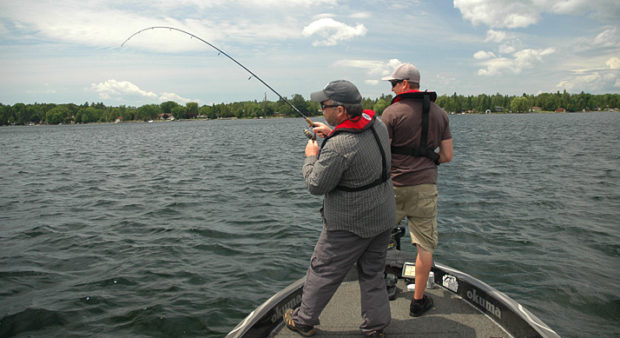
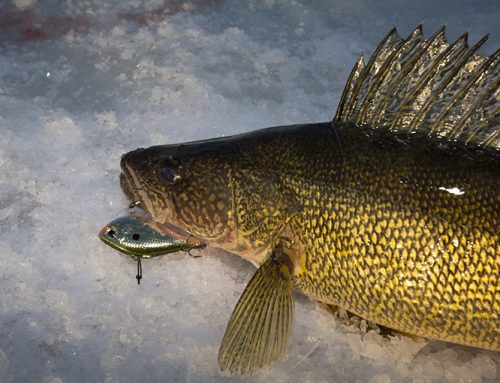
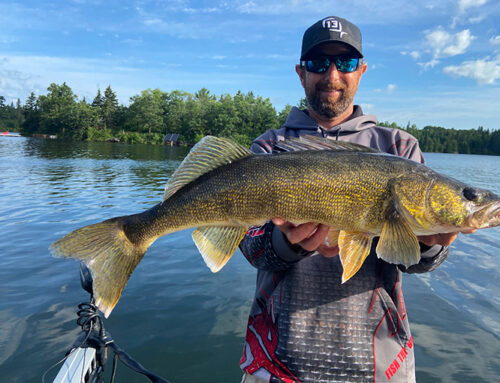
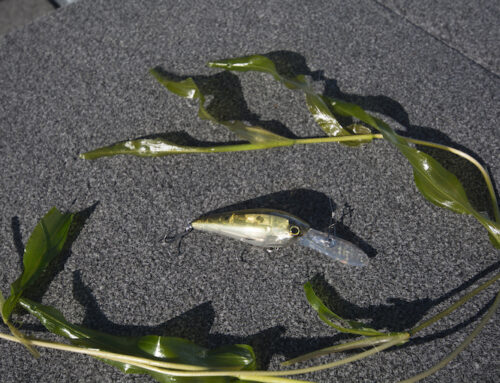
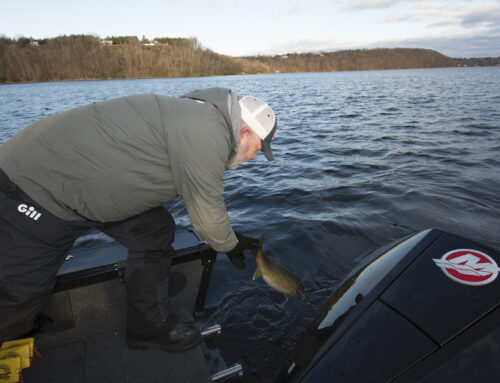
Leave A Comment